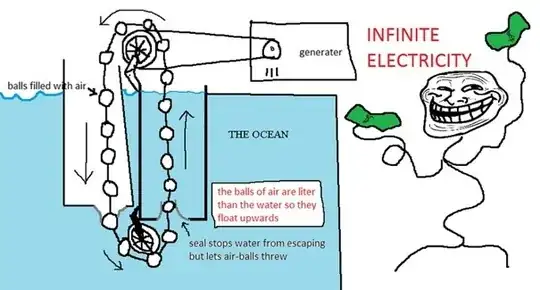(For simplicity let’s say that just 1 ball will be rotating into the machine.)
It's proven that in a buoyancy chain machine the needed energy to submerge the ball into the water column will be (theoretically) equals to the energy that can be generated from the ball going up to the top of the water column. Which will leave us with zero net energy from the waterside. A buoyancy chain machine is considered a Perpetual motion machine. But I see if we harvest all the potential energy from the gravity side. The process will end up with surplus energy from the gravity side (air side)!
I don’t find a reason why this won't work? Please explain why my theory will not work.
